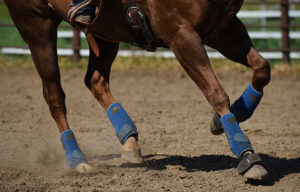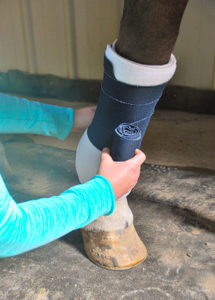Vets Test New Way to Speed Up Nerve Block Onset in Horses

Many veterinarians keep tight clinical schedules, and waiting for nerve blocks (localized analgesia) to take effect during lameness exams can eat up valuable time. But a research team focused on diagnostic analgesia has good news: They recently found a way to help speed up analgesia onset to keep lameness exams moving.
Lindsey Boone, DVM, PhD. Dipl. ACVS, an assistant clinical professor of equine surgery and sports medicine at Auburn University’s College of Veterinary Medicine, in Alabama, presented her team’s findings at the 2018 American Association of Equine Practitioners Convention, held Dec. 1-5 in San Francisco, California.
Nerve blocks help veterinarians sleuth out areas of pain in the foot and/or leg by numbing potentially painful structures in a methodical way, starting low and moving up the limb. If a lameness lessens after a block, that gives the veterinarian clues as to which parts of the foot or leg are likely involved
Create a free account with TheHorse.com to view this content.
TheHorse.com is home to thousands of free articles about horse health care. In order to access some of our exclusive free content, you must be signed into TheHorse.com.
Start your free account today!
Already have an account?
and continue reading.

Written by:
Erica Larson
Related Articles
Stay on top of the most recent Horse Health news with













